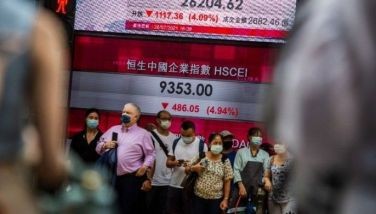Uber’s perilous stand in Philippines

In three days, Uber Manila will find itself in very hot waters if it fails to register its operations with the Land Transport Franchise Regulatory Board (LTFRB). After all, and especially since it is an international operations, it should know that there are rules that need to govern its operations in any country.
Uber, and similar operations like GrabCar, now fall into a new transportation category in the country – as Transportation Network Vehicle Services (TNVS) – after the transportation department and the LTFRB issued last May its guidelines for four new transport categories.
GrabCar, a Malaysian-based company, was able to receive its certification to operate last month, almost two months ahead of the LTFRB-set deadline for TNVS. If GrabCar was able to do it, US-based Uber (which is in 58 countries and 300 cities) should also – without raising too much of a fuss.
A cursory search of Uber on Wikipedia will reveal some rather unsettling information. In short, it has quite a history for controversies and regulatory questioning and sanctioning in several countries and cities where it operates (or operated).
Regulatory and safety concerns
As a company founded in San Francisco, California in 2009 based on the Uber mobile app it developed, the company revolutionized how consumers may access for-hire private transportation using their smartphones.
But this has also raised complains by taxi operators who accused Uber of unfair competition, and by regulators for the inability of Uber, which operates largely from the Internet, to pay for taxes derived from services of ferrying customers.
More importantly, it has raised concerns of safety since the app has had reported breaches in security, not so much for those patronizing these rides, but also the “partners“ who enroll their vehicles and subsequently are impaled with a tracking device.
In the US, there was also a recorded statement by a Uber official of the company’s intention to raise funds as well as to allocate media funds to “mitigate“ actions of critical members of the press. All of these give Uber a colorful personality.
Fighting City Hall
So it isn’t a surprise that here in the Philippines, Uber Manila has been busy engaging LTFRB on social media, and even dragging mainstream motoring journalists into taking sides over the company’s exchange of statements with LTFRB.
Meanwhile, as the LTFRB deadline approaches, a potential clampdown threat becomes more ominous if Uber does not submit the required documents.
One thing is for sure though. In this country, even with perceived ineptness of the LTFRB, the transportation department, and the government bureaucracy in general, the law is still the law – and not very few can escape compliance, especially now that the issue has reached such proportions.
Fighting City Hall, even if you are Uber with a strong history of regulatory challenges in many countries including some of the more developed economies, compliance to the local laws, even if these had been issued just barely three months ago, is a must if you wish to survive and continue operating.
It’s a pity if Uber will have to cease operation here, even if temporarily, given the service it has been able to render in the metro and outlying cities to help alleviate the current taxi crisis.
On the other hand, Uber must not be too complacent about its position in easing local public transportation availability because there are a number of competitors already flexing their muscles and wanting to take a bigger bite of this market.
New ways of travel
Just like the telecommunications industry, public transportation is moving into new technology-aided mobility schemes. The Department of Transportation and Communications and LTFRB have been trying to stay updated by issuing four new transport categories aimed at decreasing traffic congestion through technology.
Aside from the TNVS, there’s the Premium Taxi, Airport Bus, and Bus Rapid Transit. Fortunately, the concepts are not new and just need localization where necessary.
(By the way, Premium Taxi is a category, not a company as some misled citizens have been spouting. And it does not specifically compete against Uber services. PT is something like a luxury taxi fleet, all owned by the operator, since it will have GPS, receipt printing, and promises of having a fleet of not older than seven years.)
Hopefully, with the continued improvement of transportation technologies, our government will be able to respond faster to helping ease the day-to-day mobility woes of our countrymen. Not only does Metro Manila have a public transportation system that absolutely stinks, traffic congestion of major thoroughfares gets worse by the day.
App-based taxi 101
For the uninitiated, there are now three major transport network companies operating in Metro Manila and some of the country’s bigger cities. They are Uber, GrabCar and Easy Taxi (founded in Brazil in 2011). All have their own app that have to be downloaded on your smartphone.
Competition among the three has reportedly been intense, more especially between the last two because of their more reasonable fare rates and they use the existing taxi networks. (Uber charges extra, but its available service especially the UberBlack are more upscale.)
You can (and should) download all three apps if you do ride cabs since availability of partner vehicles especially during metro peak hours has made it more difficult to book a ride.
But taxi apps have become a source of safety for travellers because you get to see the driver’s photo and complete name as well as the plate number when he/she responds positively to your call. You can even monitor the taxi real time as it moves to your location.
The three companies also have a pretty good selection system that assures of passenger safety. GrabTaxi (by GrabCar) even allows the passenger to post his trip in real time for friends, family and colleagues to monitor for added safety.
Compared to the regular taxis that you hail directly on the street, these app-based taxis have additional fees on top of the regular meter–based fare – except when they have promos that usually waive the added fee. There are other fees, like tips, that you sometimes fill up when there’s a tight supply situation.
They may be more expensive, but at least, they save you the frustration of getting wet while waiting for a cab to stop for you on the street on a rainy day; or of being anxious that you could become the next victim publicized on Facebook for hailing a cab that had been taken over by a crime syndicate.
Facebook and Twitter
We are actively using two social networking websites to reach out more often and even interact with and engage our readers, friends and colleagues in the various areas of interest that I tackle in my column. Please like us at www.facebook.com and follow us at www.twitter.com/ReyGamboa.
Should you wish to share any insights, write me at
Link Edge, 25th Floor, 139 Corporate Center, Valero Street, Salcedo Village, 1227 Makati City. Or e-mail me at
[email protected]. For a compilation of previous articles, visit www.BizlinksPhilippines.net.
- Latest
- Trending




























